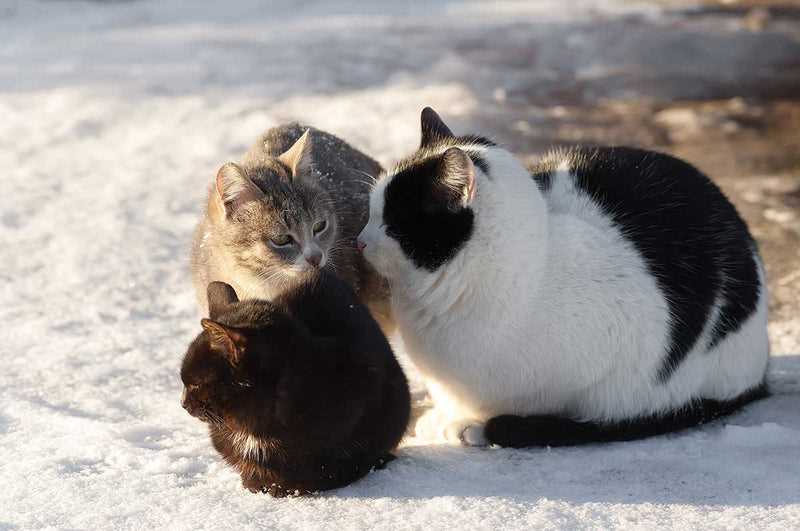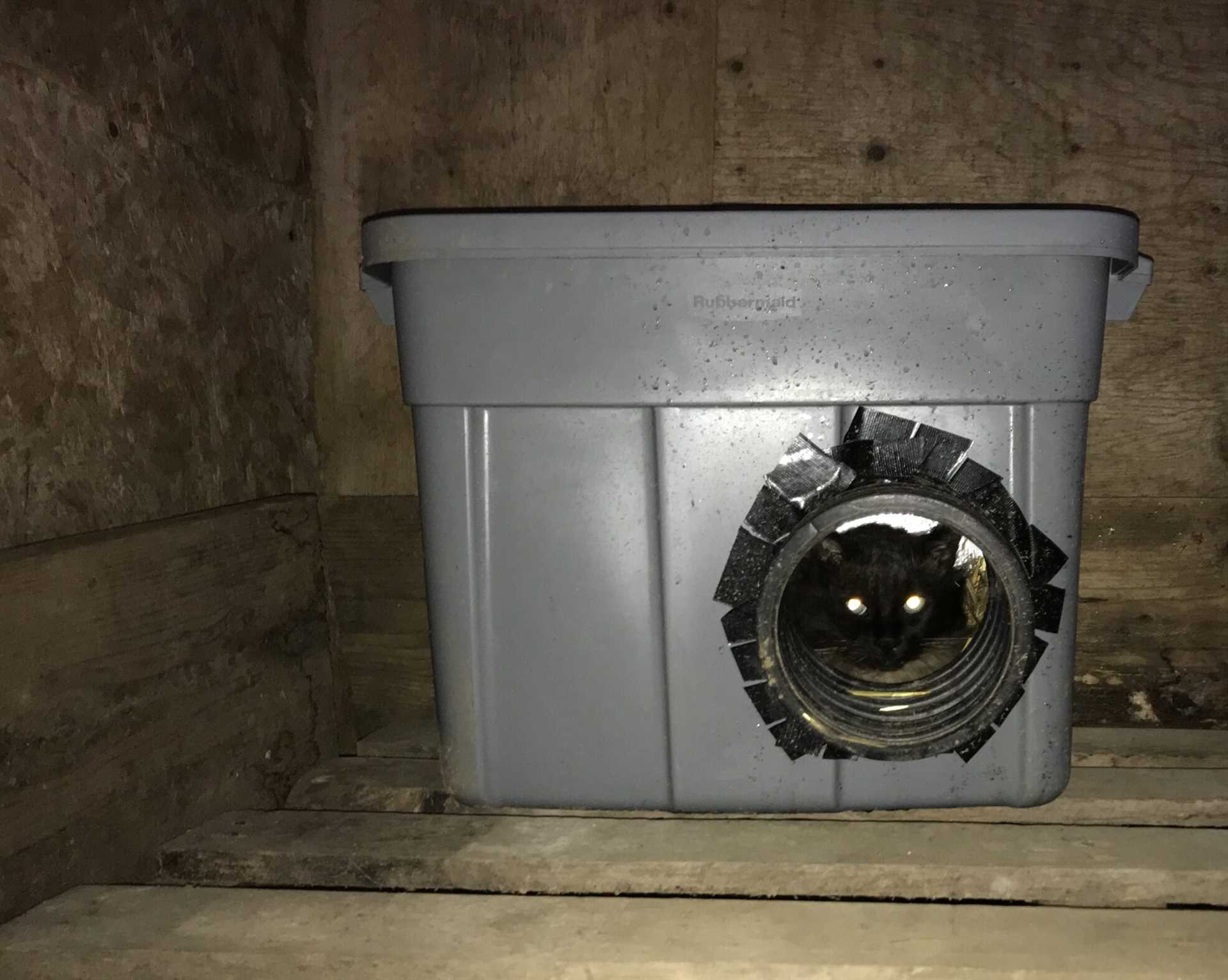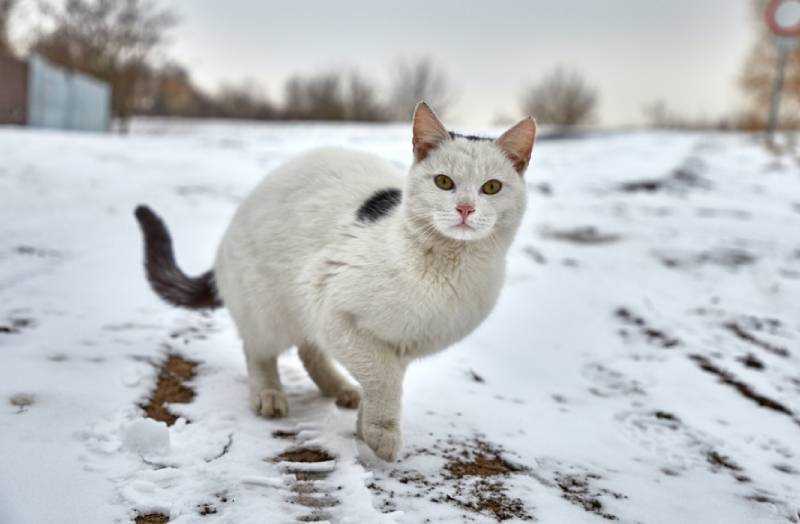



Providing a safe haven is crucial for any feline wandering outdoors during the frigid months. Ensuring they have access to warm shelters, such as insulated boxes or garages, can significantly enhance their chances of staying cozy and protected from harsh elements.
Nourishing them with high-calorie food is equally important. This boosts their energy levels and helps maintain body heat. Opt for quality wet food or specially formulated dry food designed for outdoor animals, as these options offer the necessary nutrients to withstand low temperatures.
Encouraging hydration is key too. Fresh, unfrozen water sources are essential; consider using heated water bowls to prevent freezing. Regularly checking these bowls ensures they remain hydrated, which is vital for their overall health during the cold spell.
Lastly, keep an eye out for any signs of distress or illness. Regular interaction and monitoring can help identify any issues early on, allowing for timely care and support. With these measures in place, a feline can navigate the cold season with a better chance of comfort and safety.
Winter Strategies for Outdoor Felines
Building a shelter is a practical step to ensure warmth. Use materials like wood, Styrofoam, or straw to create an insulated space. Elevating the structure off the ground can prevent moisture from seeping in.
Feeding outdoor residents is crucial. Providing high-quality, high-calorie food helps maintain energy levels in colder months. Canned food is beneficial as it offers hydration and warmth when consumed.
Water sources may freeze, so offering fresh water daily is essential. Consider using insulated bowls to reduce freezing, or place heated water dishes to keep hydration accessible.
Regular health check-ups are vital. Risks include frostbite or hypothermia, which can escalate quickly. If you notice unusual behavior or signs of illness, consult a veterinarian. For instance, understanding how much it costs to unblock a cat can prepare you for unexpected medical expenses.
Observation plays a key role. Watch for signs of distress or difficulty adapting to the cold. If needed, consider bringing them indoors during extreme weather conditions.
Assessing the Risks of Cold Weather for Felines
To ensure the well-being of outdoor felines during frigid months, it’s vital to recognize key hazards they face. Low temperatures can lead to hypothermia, which manifests through shivering, lethargy, and loss of coordination. Immediate shelter is crucial; providing insulated boxes with straw can help retain warmth.
Frozen water sources can lead to dehydration. Regularly check for accessible liquid, and consider placing heated bowls to prevent freezing. Additionally, the risk of frostbite on ears and paws is significant. Monitor for signs of injury or discomfort, and be prepared to assist if necessary.
Food scarcity becomes more pronounced as natural prey hides or hibernates. Supplement their diet with high-calorie options to maintain energy levels. Partnering with local shelters for food donations can also enhance their chances of obtaining nourishment.
Road safety is another concern, as visibility decreases and vehicles may not notice these animals in snowy conditions. Encourage the community to remain vigilant and help keep an eye out for these vulnerable beings.
Lastly, the stress of harsh weather can impact mental health. Regular human interaction and safe spaces can alleviate anxiety, making it essential to provide comfort and companionship throughout the cold season.
Identifying Shelter Options for Felines During Cold Months

Providing adequate shelter is critical for outdoor felines facing harsh temperatures. First, consider insulated structures that block wind and retain warmth. Plastic storage bins with a lid work well; cut an entrance large enough for entry, and fill it with straw or blankets to create a cozy environment. Ensure the opening is directed away from prevailing winds.
Another effective option includes wooden shelters, which can be built or purchased. A raised platform keeps the floor dry and reduces heat loss. Adding a flap door can enhance protection from the elements. Remember to place these shelters in safe locations, away from busy roads and predators.
Use of Natural Cover

Existing natural cover such as dense shrubs or overhangs can also serve as makeshift homes. These areas provide some protection from snow and rain, though they may not offer the warmth of a constructed shelter. Enhance these spots with bedding materials to improve comfort.
Community Involvement
Engaging with local rescue groups can yield additional resources. They often have materials or kits available for building shelters. Collaboratively establishing feeding stations near these structures can further support the well-being of outdoor felines. For more insights on their behavior, check out do cats like being alone.
Providing Food and Nutrition for Felines in Harsh Conditions
Regular access to high-quality food is crucial for maintaining health in difficult climates. Dry kibble can be beneficial since it’s easier to store and remains safe longer. Look for brands that offer a balanced diet rich in protein and fat, essential for energy in cold weather. Canned food is also a great option, especially during freezing temperatures, as it provides hydration and warmth.
Feeding Tips

Set up feeding stations in sheltered areas to protect meals from snow and ice. Use elevated bowls to prevent freezing and to keep food clean from debris. Feeding smaller portions more frequently helps maintain energy levels. Consider adding warm water to dry kibble to make it more appealing and palatable.
Nutritional Supplements
In extreme conditions, adding nutritional supplements can enhance overall health. Omega-3 fatty acids can improve coat quality, while vitamins A and E support immune function. Consult a veterinarian for specific recommendations tailored to individual needs. Regular assessments of body condition can help ensure they maintain a healthy weight throughout the cold months.
Video:
Providing a safe haven is crucial for any feline wandering outdoors during the frigid months. Ensuring they have access to warm shelters, such as insulated boxes or garages, can significantly enhance their chances of staying cozy and protected from harsh elements.
Nourishing them with high-calorie food is equally important. This boosts their energy levels and helps maintain body heat. Opt for quality wet food or specially formulated dry food designed for outdoor animals, as these options offer the necessary nutrients to withstand low temperatures.
Encouraging hydration is key too. Fresh, unfrozen water sources are essential; consider using heated water bowls to prevent freezing. Regularly checking these bowls ensures they remain hydrated, which is vital for their overall health during the cold spell.
Lastly, keep an eye out for any signs of distress or illness. Regular interaction and monitoring can help identify any issues early on, allowing for timely care and support. With these measures in place, a feline can navigate the cold season with a better chance of comfort and safety.
Winter Strategies for Outdoor Felines
Building a shelter is a practical step to ensure warmth. Use materials like wood, Styrofoam, or straw to create an insulated space. Elevating the structure off the ground can prevent moisture from seeping in.
Feeding outdoor residents is crucial. Providing high-quality, high-calorie food helps maintain energy levels in colder months. Canned food is beneficial as it offers hydration and warmth when consumed.
Water sources may freeze, so offering fresh water daily is essential. Consider using insulated bowls to reduce freezing, or place heated water dishes to keep hydration accessible.
Regular health check-ups are vital. Risks include frostbite or hypothermia, which can escalate quickly. If you notice unusual behavior or signs of illness, consult a veterinarian. For instance, understanding how much it costs to unblock a cat can prepare you for unexpected medical expenses.
Observation plays a key role. Watch for signs of distress or difficulty adapting to the cold. If needed, consider bringing them indoors during extreme weather conditions.
Assessing the Risks of Cold Weather for Felines
To ensure the well-being of outdoor felines during frigid months, it’s vital to recognize key hazards they face. Low temperatures can lead to hypothermia, which manifests through shivering, lethargy, and loss of coordination. Immediate shelter is crucial; providing insulated boxes with straw can help retain warmth.
Frozen water sources can lead to dehydration. Regularly check for accessible liquid, and consider placing heated bowls to prevent freezing. Additionally, the risk of frostbite on ears and paws is significant. Monitor for signs of injury or discomfort, and be prepared to assist if necessary.
Food scarcity becomes more pronounced as natural prey hides or hibernates. Supplement their diet with high-calorie options to maintain energy levels. Partnering with local shelters for food donations can also enhance their chances of obtaining nourishment.
Road safety is another concern, as visibility decreases and vehicles may not notice these animals in snowy conditions. Encourage the community to remain vigilant and help keep an eye out for these vulnerable beings.
Lastly, the stress of harsh weather can impact mental health. Regular human interaction and safe spaces can alleviate anxiety, making it essential to provide comfort and companionship throughout the cold season.
Identifying Shelter Options for Felines During Cold Months

Providing adequate shelter is critical for outdoor felines facing harsh temperatures. First, consider insulated structures that block wind and retain warmth. Plastic storage bins with a lid work well; cut an entrance large enough for entry, and fill it with straw or blankets to create a cozy environment. Ensure the opening is directed away from prevailing winds.
Another effective option includes wooden shelters, which can be built or purchased. A raised platform keeps the floor dry and reduces heat loss. Adding a flap door can enhance protection from the elements. Remember to place these shelters in safe locations, away from busy roads and predators.
Use of Natural Cover

Existing natural cover such as dense shrubs or overhangs can also serve as makeshift homes. These areas provide some protection from snow and rain, though they may not offer the warmth of a constructed shelter. Enhance these spots with bedding materials to improve comfort.
Community Involvement
Engaging with local rescue groups can yield additional resources. They often have materials or kits available for building shelters. Collaboratively establishing feeding stations near these structures can further support the well-being of outdoor felines. For more insights on their behavior, check out do cats like being alone.
Providing Food and Nutrition for Felines in Harsh Conditions
Regular access to high-quality food is crucial for maintaining health in difficult climates. Dry kibble can be beneficial since it’s easier to store and remains safe longer. Look for brands that offer a balanced diet rich in protein and fat, essential for energy in cold weather. Canned food is also a great option, especially during freezing temperatures, as it provides hydration and warmth.
Feeding Tips

Set up feeding stations in sheltered areas to protect meals from snow and ice. Use elevated bowls to prevent freezing and to keep food clean from debris. Feeding smaller portions more frequently helps maintain energy levels. Consider adding warm water to dry kibble to make it more appealing and palatable.
Nutritional Supplements
In extreme conditions, adding nutritional supplements can enhance overall health. Omega-3 fatty acids can improve coat quality, while vitamins A and E support immune function. Consult a veterinarian for specific recommendations tailored to individual needs. Regular assessments of body condition can help ensure they maintain a healthy weight throughout the cold months.
Video:
Providing a safe haven is crucial for any feline wandering outdoors during the frigid months. Ensuring they have access to warm shelters, such as insulated boxes or garages, can significantly enhance their chances of staying cozy and protected from harsh elements.
Nourishing them with high-calorie food is equally important. This boosts their energy levels and helps maintain body heat. Opt for quality wet food or specially formulated dry food designed for outdoor animals, as these options offer the necessary nutrients to withstand low temperatures.
Encouraging hydration is key too. Fresh, unfrozen water sources are essential; consider using heated water bowls to prevent freezing. Regularly checking these bowls ensures they remain hydrated, which is vital for their overall health during the cold spell.
Lastly, keep an eye out for any signs of distress or illness. Regular interaction and monitoring can help identify any issues early on, allowing for timely care and support. With these measures in place, a feline can navigate the cold season with a better chance of comfort and safety.
Winter Strategies for Outdoor Felines
Building a shelter is a practical step to ensure warmth. Use materials like wood, Styrofoam, or straw to create an insulated space. Elevating the structure off the ground can prevent moisture from seeping in.
Feeding outdoor residents is crucial. Providing high-quality, high-calorie food helps maintain energy levels in colder months. Canned food is beneficial as it offers hydration and warmth when consumed.
Water sources may freeze, so offering fresh water daily is essential. Consider using insulated bowls to reduce freezing, or place heated water dishes to keep hydration accessible.
Regular health check-ups are vital. Risks include frostbite or hypothermia, which can escalate quickly. If you notice unusual behavior or signs of illness, consult a veterinarian. For instance, understanding how much it costs to unblock a cat can prepare you for unexpected medical expenses.
Observation plays a key role. Watch for signs of distress or difficulty adapting to the cold. If needed, consider bringing them indoors during extreme weather conditions.
Assessing the Risks of Cold Weather for Felines
To ensure the well-being of outdoor felines during frigid months, it’s vital to recognize key hazards they face. Low temperatures can lead to hypothermia, which manifests through shivering, lethargy, and loss of coordination. Immediate shelter is crucial; providing insulated boxes with straw can help retain warmth.
Frozen water sources can lead to dehydration. Regularly check for accessible liquid, and consider placing heated bowls to prevent freezing. Additionally, the risk of frostbite on ears and paws is significant. Monitor for signs of injury or discomfort, and be prepared to assist if necessary.
Food scarcity becomes more pronounced as natural prey hides or hibernates. Supplement their diet with high-calorie options to maintain energy levels. Partnering with local shelters for food donations can also enhance their chances of obtaining nourishment.
Road safety is another concern, as visibility decreases and vehicles may not notice these animals in snowy conditions. Encourage the community to remain vigilant and help keep an eye out for these vulnerable beings.
Lastly, the stress of harsh weather can impact mental health. Regular human interaction and safe spaces can alleviate anxiety, making it essential to provide comfort and companionship throughout the cold season.
Identifying Shelter Options for Felines During Cold Months

Providing adequate shelter is critical for outdoor felines facing harsh temperatures. First, consider insulated structures that block wind and retain warmth. Plastic storage bins with a lid work well; cut an entrance large enough for entry, and fill it with straw or blankets to create a cozy environment. Ensure the opening is directed away from prevailing winds.
Another effective option includes wooden shelters, which can be built or purchased. A raised platform keeps the floor dry and reduces heat loss. Adding a flap door can enhance protection from the elements. Remember to place these shelters in safe locations, away from busy roads and predators.
Use of Natural Cover

Existing natural cover such as dense shrubs or overhangs can also serve as makeshift homes. These areas provide some protection from snow and rain, though they may not offer the warmth of a constructed shelter. Enhance these spots with bedding materials to improve comfort.
Community Involvement
Engaging with local rescue groups can yield additional resources. They often have materials or kits available for building shelters. Collaboratively establishing feeding stations near these structures can further support the well-being of outdoor felines. For more insights on their behavior, check out do cats like being alone.
Providing Food and Nutrition for Felines in Harsh Conditions
Regular access to high-quality food is crucial for maintaining health in difficult climates. Dry kibble can be beneficial since it’s easier to store and remains safe longer. Look for brands that offer a balanced diet rich in protein and fat, essential for energy in cold weather. Canned food is also a great option, especially during freezing temperatures, as it provides hydration and warmth.
Feeding Tips

Set up feeding stations in sheltered areas to protect meals from snow and ice. Use elevated bowls to prevent freezing and to keep food clean from debris. Feeding smaller portions more frequently helps maintain energy levels. Consider adding warm water to dry kibble to make it more appealing and palatable.
Nutritional Supplements
In extreme conditions, adding nutritional supplements can enhance overall health. Omega-3 fatty acids can improve coat quality, while vitamins A and E support immune function. Consult a veterinarian for specific recommendations tailored to individual needs. Regular assessments of body condition can help ensure they maintain a healthy weight throughout the cold months.












